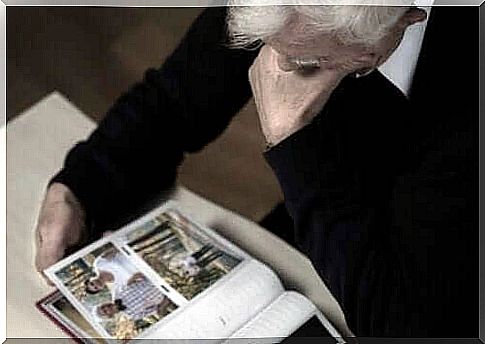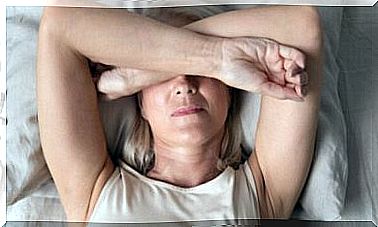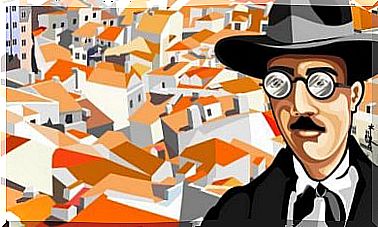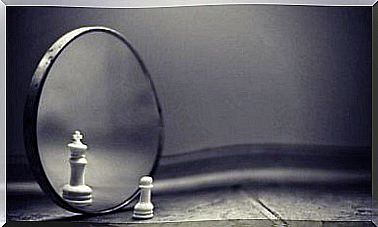Non-pharmacological Treatment For Dementia

Before we begin to define what Alzheimer’s disease is, and what non-pharmacological treatment consists of, we must first take a closer look at dementia. Norwegian Health Informatics defines dementia as “ a common term for a group of brain diseases that preferably occur in old age and which cause symptoms such as memory impairment, impaired ability to act, impaired language function, personality changes and changes in behavior. ”
We can limit the definition, by saying that dementia has various causes and will usually involve failing memory, communication and attention. Furthermore, it is usually a chronic condition that leads to a gradual loss of autonomy and quality of life.
With this definition in mind, we can define Alzheimer’s disease as a neurodegenerative disease characterized by the presence of impaired cognitive and behavioral function. In the same way, they have a gradual beginning and gradually get worse. It usually occurs in adulthood, mainly in the elderly.
At present, there is no effective treatment to stop or reverse the course of this disease. However, professionals have developed various types of interventions that can help slow the progression of dementia.
A good example of this is non-pharmacological treatment. These are forms of therapy that consist of alternative treatments that can improve the patient’s quality of life.

Non-pharmacological treatment has many benefits:
- Maintains and / or stimulates the remaining capacities of the patient.
- Promotes patients’ autonomy and independence.
- Improves social relationships.
- Improves self-esteem, and therefore self-esteem.
- Strengthens patients suffering from dementia.
- Improves the quality of life of the patient and the people who take care of them.
Everyday activities
During the administration of non-pharmacological treatment, a professional will be present and evaluate the patient’s performance.
The evaluation depends on the patient’s level of dependence and the need for support. The ultimate goal of this type of treatment is to delay or reduce the decline in the ability to perform everyday activities.
Music therapy
According to the World Federation of Music Therapy, music therapy “is the professional use of music and its elements as an intervention in medical, educational and everyday environments with individuals, groups, families or communities seeking to optimize quality of life and prepare for their physical, social, communicative, emotional, intellectual and spiritual health and well-being ”.
Music therapy is just one of many non-pharmacological treatments. You can, for example, also include dance therapy and physiotherapy and integrate all these different treatments into joint sessions. You must always remember to take each patient’s capacity into account.
Laughter therapy as a form of non-pharmacological treatment
Techniques for laughter therapy are based on the theory that laughter is a form of emotional exhaustion and the incongruity theory of humor. The goal of this type of therapy is to trigger spontaneous and real laughter in the patient. However, false or stimulated laughter will also often occur during such therapy.
Through this treatment, which is non-pharmacological, the patient will use and practice various body expressions, play, dance and breath. All of these things can help relieve the stress that dementia can generate.
Sanserom (Snoezelen)
Anne Jean Ayres developed this type of sensory stimulation therapy. The main goal of this type of therapy is for the patient to relax through their senses and by interacting with the people around them.
A sensory room is a calming and stimulating environment that gives a good feeling of well-being in humans.
Reminiscence therapy
This is a non-pharmacological treatment that is becoming increasingly popular in many places in the world. This form of therapy works with the patient’s episodic and autobiographical memory.
Therapists should use resources such as photographs, music, news articles, videos, etc. These resources will allow the patient to remember very specific moments from their lives. Thus, they will be able to “relive” the emotional aspects of the memories, such as smells, feelings and sounds.

Non-pharmacological treatment based on reality orientation
The main goal of such treatments is for the patient to become more aware of their reality. Therefore, the therapist will orient them in three areas:
- Present tense (date and time).
- Location (where they are).
- Personal awareness (who they are).
This will give the patient a better understanding of what is happening around them and with them. Consequently, it is a very useful tool when it comes to maintaining the perception of control.
Animal-assisted therapy as a form of non-pharmacological treatment
Therapy with animals, such as dogs, has great benefits on an emotional, social, functional and cognitive level. Furthermore, this type of therapy can also generally help with mood as well as physical and mental health and psychomotor skills.
Occupational therapy
Occupational therapy, formerly called occupational therapy, works to rehabilitate cognitive, physical and social skills. For this purpose, patients spend time on several different activities, such as crafts.
Cognitive stimulation, training and rehabilitation
Although they are similar, each of them has its own goal:
- Cognitive rehabilitation includes activities aimed at restoring impaired cognitive functions. This weakening or damage can be due to several different causes. For example, head trauma, mild cognitive impairment, and depression, among others.
- On the other hand, cognitive stimulation is a process through which activities are carried out, in order to delay cognitive impairment. For example, when a person notices that they are starting to struggle with memory.
- Finally, we have cognitive training. This is a set of activities that try to optimize or maintain cognitive performance. It is a method of preventing further cognitive impairment and improving the patient’s cognitive reserves.

It is important to point out that only qualified professionals should perform non-pharmacological treatment, and that each case must be evaluated in advance. It is also worth mentioning that although these treatments are popular in other countries, it is not certain that everyone will be offered in Norway.
In addition, we will again emphasize that none of these treatments can cure dementia. However, they can reduce the rate of development of the disease. These treatments are worth it to give patients with dementia more tools to improve their quality of life.







